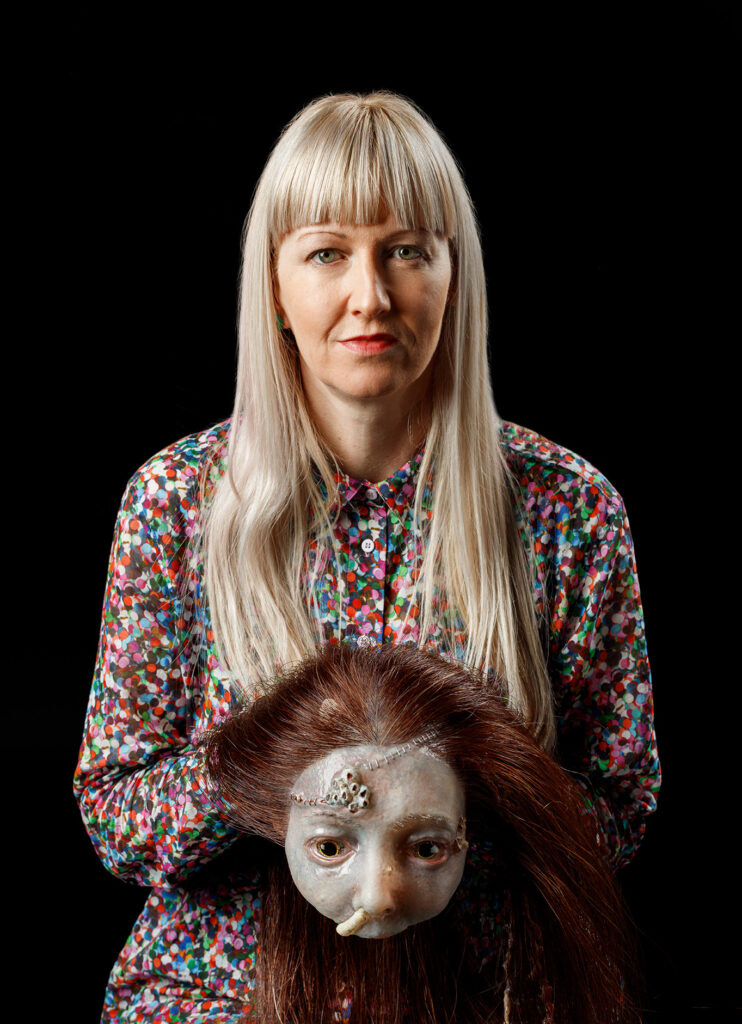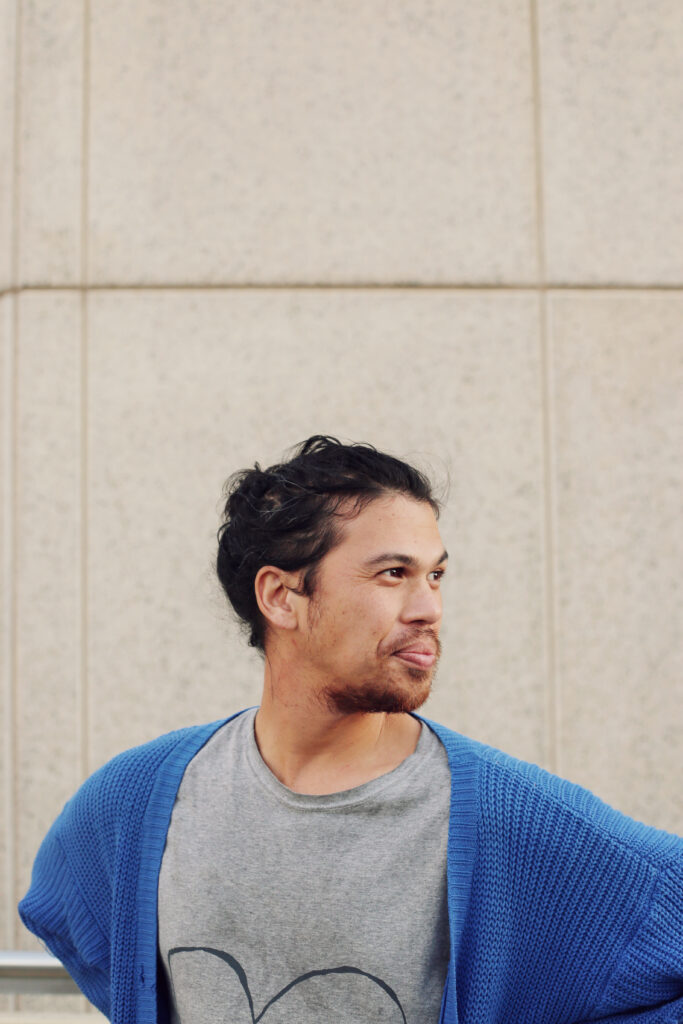
Erin Coates
In 2024, Erin Coates will be engaging with cetacean bones, underwater fauna specimens and cast objects within the Museum of the Great Southern collection to speculate on animal-human encounters.
In artworks over the past seven years Coates has examined elements of WA’s underwater ecology and incidents from local maritime history. This new residency project will focus on her own lived experiences and family history in relation to this subject matter.
ABOUT THE ARTIST
Erin Coates is an artist in Booloo-Perth working across film, sculpture and drawing. Her practice draws from her background as a rock climber and free diver as well as her deep interest in biology, body horror and the natural world. Her creative process regularly involves physical interactions with submerged, enclosed, or hard-to-access terrestrial spaces.
The works that are produced examine our relationships with the natural world, our physical thresholds and the nature of transformed bodies – both human and non-human. Recent work has centred on the underwater Gothic in relation to Australia’s unique marine and estuarine ecologies, whilst also examining personal and familial narratives. Coates’ focus on underwater biology stems in part from her childhood experiences growing up around professional shell divers and against the backdrop of the Southern Coast of Western Australia.
Coates gained a Master of Fine Arts from the University of British Columbia, Canada, in 2006 and has since shown in exhibitions in Australia and abroad as well as in international film festivals. Key exhibitions include: rīvus: 23rd Biennale of Sydney (2022), Erin Coates // videos and movies // 2011-2020 Art Gallery of Western Australia (2021), Adelaide Biennial: Monster Theatres at the Art Gallery of South Australia (2020), Videobrasil – 21st Contemporary Art Biennial | Imagined Communities, São Paulo, Brasil (2019), Driving to the Ends of the Earth, Hiroshima Museum of Contemporary Art, Japan (2018).
Coates’ work is held in major state and private collections within Australia. She is represented by Moore Contemporary.

Brett Leigh-Dicks
In 2023, Brett Leigh Dicks explored the Museum of the Goldfields’ Dwyer and MacKay photographic archive to follow in the footsteps of the two photographers, revisiting the sites of the original photographs and using the act of repeat photography to present a diachronic view of Kalgoorlie ad surrounding goldfields. The project used the rich visual legacy of the archive as basis for exploring the impact of societal and environmental change within the Goldfields.
ABOUT THE ARTIST
Brett Leigh Dicks is an American/Australian currently based in Fremantle, Western Australia. He is a social commentator who takes an archaeological approach to photography, primarily exploring the relationship between society and the environment.
Using the landscape as a marker of societal change, Brett’s work explores how themes such as dispossession, repression, exploitation, and retribution play out over time. He has documented the legacy of the indigenous mission system, death row and capital punishment, the vestige of decommissioned nuclear missile bases and most recently, the aftermath and wide-ranging impact of atomic energy. Framed within the ethos and aesthetic of the New Topographic movement he presents his subject matter in its topographical state, providing a direct conduit between his subject matter and the viewer.
Brett’s work has been featured in over 50 solo exhibitions in Australia, Europe, and North America along with numerous group exhibitions. His work was featured the Figge Art Museum’s recent survey of photography in the American West, “The Magnetic West,” State of the World exhibition at Prix de la Photographie Paris, the Sony International Photography Awards. In Australia Brett’s work has been featured at both the Head On Photo Festival and Ballarat International Foto Biennale. His photography has been published in journals, newspapers, and periodicals, including The New York Times, Griffith Review, and VICE.

Perdita Phillips
In 2023, Perdita Phillips worked between the historic woodlines and ecological histories of Kalgoorlie/Boulder, mineral forms, and representations of plants and animals in the Dwyer and Mackay photographic collection of the Western Australian Museum.
She used a range of alternative photographic techniques and created projected images as one of her outcomes.
ABOUT THE ARTIST
Dr Perdita Phillips is an Australian artist working with environmental issues and social change since 1991. Born in Perth/Boorloo she has long concerned herself with interactions between human and nonhuman worlds.
A recipient of State Government arts grants and funding, two Australia Council Inter-Arts grants and Artsource residencies in Basel and Sydney, she has exhibited widely including Unique States (2022, Holmes à Court gallery at Vasse Felix), We Must Get Together Some Time (CASM/MPAC, Mandurah and touring, 2021-2022), Dealing with the runoff, a walk with a historian and an engineer for the Vancouver Arts Festival (2019), Make Known: The Exquisite Order of Infinite Variation (2018, UNSW Galleries), Here&Now2018: Besides, it is always the others who die (Lawrence Wilson Art Gallery), Frankenstein GRID (Stanford University outdoor projection festival, 2018), Incinerator Art Award (2017, Incinerator Gallery), Another Green World (2017, Western Plains Cultural Centre), Objectillogica – a modern Wunderkammer (2017, Holmes à Court Gallery), enhancement: MAKING SENSE (Universidade do Porto, 2016), Radical Ecologies (PICA, 2016), Novel Ecologies (2013, The Cross Arts Projects, Sydney) and fieldwork/fieldwalking (PhD exhibition Moores Building Contemporary Art Gallery, 2006).
Published books include Fossil III (2019, as part of the Lost Rocks project) and Birdlife (with Nandi Chinna, Michael Farrell, Graeme Miles, and Nyanda Smith) with Lethological Press. Her artworks can be seen in the Janet Holmes à Court, City of Joondalup and Armadale City Council collections, at The Farm, Margaret River, Murdoch University’s School of Veterinary and Biomedical Sciences and the Cosmology Gallery, Gravity Discovery Centre, Gingin.

Gok-Lim Finch
In 2023-24, Gok-Lim will be creatively interrogating and reimagining the history of Chinese settlers in the early settlement in the Great Southern and the lingering traces of market gardens in Albany (Kinjarling).
The residency aims to be an opening of the Museum of the Great Southern collection and an opening of community memory through conversations about the living geography of the vegetables and fruit of settlement gardens.
ABOUT THE ARTIST
Gok-Lim is a writer and artist living on the unceded sovereign lands of the Whadjuk Noongar people. They are currently studying a PhD at the University of Western Australia on the history of the Christmas Island workers union.
In the past, they have co-produced participatory theatre (Friendquest), co-founded and managed a literary journal (dotdotdash), conducted living theatre and collaborative performance art projects (Grr, Taberna Lifecraft), and co-curated experimental performance festivals (Grr Nights, Peaks), and group exhibitions (Words Without Grammar, Seasons of Histories, and Hopes, Patches of Hope and Resistance, Instant).
Their practice is concerned with the social practice of living, and the potential for collaborative and accessible creative practices that are grounded in specific historical understandings.